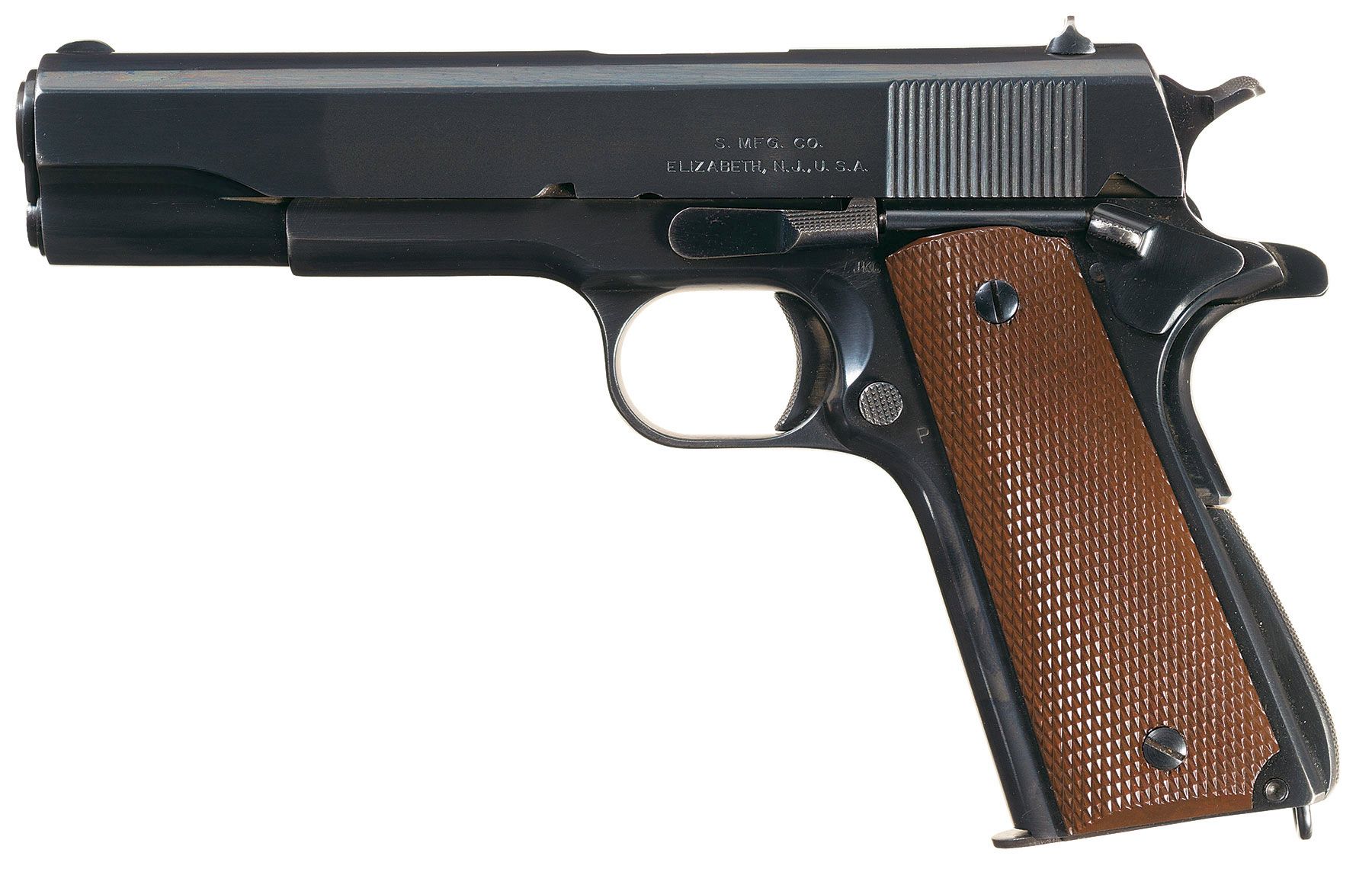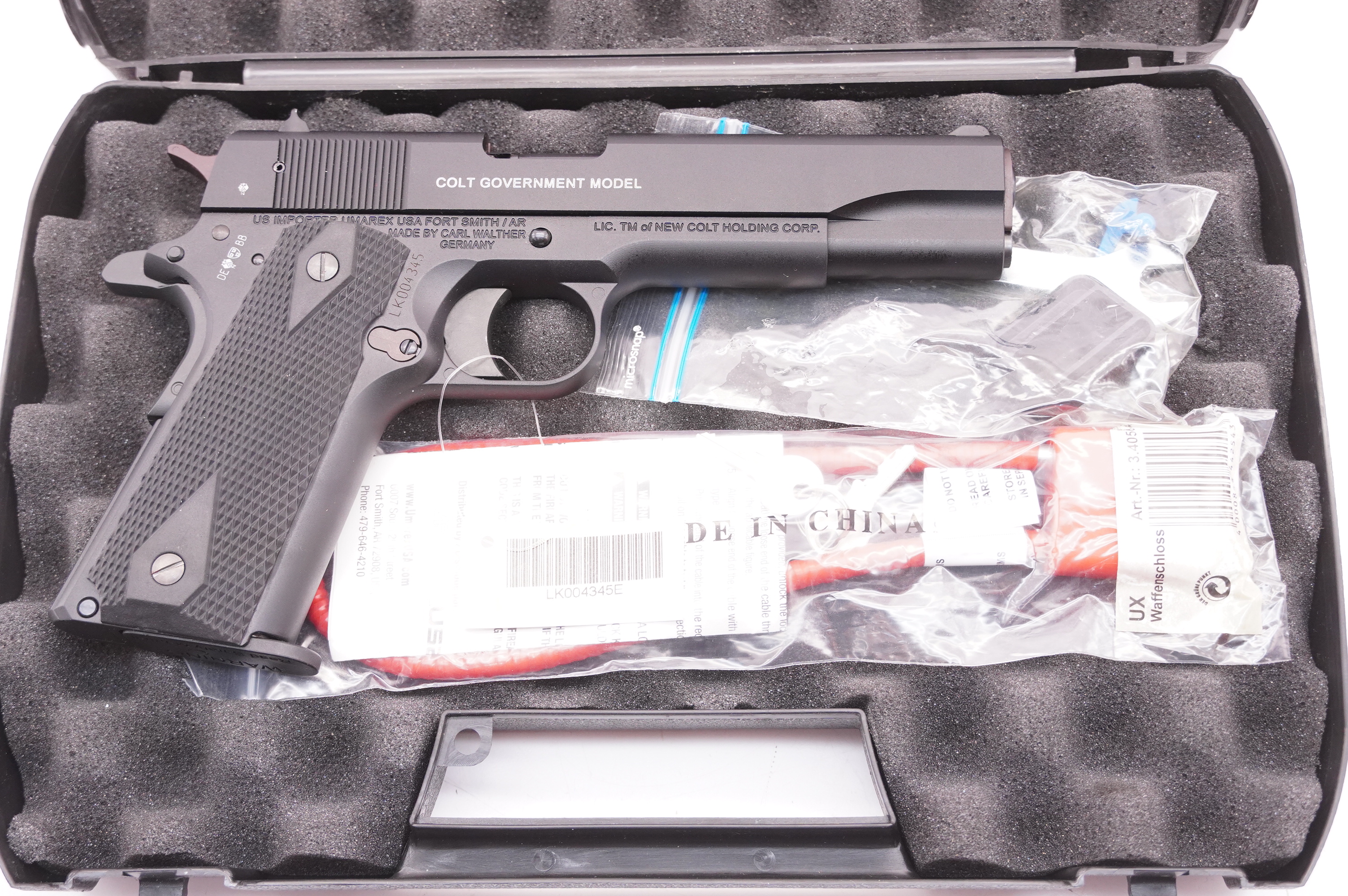Model 1911 A1 - The page you requested was not found. Please refine your search or use the navigation above to search for articles.
We use technologies such as cookies and/or to store device information to provide the best experience. By consenting to these technologies, it is possible to process data such as search behavior or unique IDs on this site. Withholding or withdrawing consent may adversely affect certain features and functions.
Model 1911 A1
Technical storage or access is necessary for the legitimate purpose of allowing the use of certain services at the direct request of the subscriber or user, or for the sole purpose of transmitting communications over an electronic communications network.
Test: The New Springfield M1911 A1 Pistol Compared To An Original Colt M1911 Black Army From 1918
Technical storage or access is necessary for the legitimate purpose of storing settings requested by the subscriber or user.
Technical storage or access used for statistical purposes only. Technical storage or access used only for anonymized statistical purposes. Without the subscription page, the voluntary requirement of your Internet service provider, or the additional registration of third parties, the information stored or obtained solely for this purpose cannot be used to identify you.
Technical storage or access is necessary to create user profiles for sending advertisements or to track users across websites or multiple websites for similar marketing purposes. The M1911 (Colt 1911 or Colt Government) is a single-action, revolver. , a semi-automatic pistol chambered for .45 ACP ammunition.
The official handgun of the US military until 1940 was the original automatic pistol, .45 caliber, M1911, approved in March 1911, and the revised M1911A1 automatic pistol, .45, M1911A1, which entered service was changed to 26. Vietnam War Pistol, .45 Caliber, Automatic, M1911A1.
Springfield Armory 1911 A1
The M1911, designed by John Browning, is the most famous of the models that used the short-reverse principle in its basic design. The pistol was widely copied, and this system became the pre-20th century type and almost all modern satirical firearms. It is popular among casual shooters in competitive events such as the International Defensive Pistol Association and the International Practical Shooting Association.
The US military purchased approximately 2.7 million M1911 and M1911A1 pistols during their lifetime. This pistol was the standard weapon of the United States Armed Forces from 1911 to 1985. It was used extensively in World War I, World War II, the Korean War, and the Vietnam War. The M1911A1 replaced the 9mm Beretta M9 pistol as the standard weapon of the US military in 1985. However, the US Army did not replace the M1911A1 with the Beretta M9 until October 1986, and the M1911 was not completely phased out due to its popularity among users. Modern derivatives of the M1911 are in use in the United States. Used by Army Special Forces, US Marine Corps, and some units of the US Navy.
The M1911 pistol resulted from the development of a suitable self-loading (or semi-automatic) pistol to replace the revolver variety in service in the late 1890s.
The United States was introducing new weapons at an official rate; That decade saw the introduction of several new pistols, two completely new service rifles (the M1892/96/98 Krag and the M1895 Navy Lee), as well as numerous Army and Navy rifles from Colt, Smith, and Wesson. The next decade followed a similar pace, with numerous other revolvers and the search for a self-loading pistol, culminating 10 years later with the official adoption of the M1911.
Auto Ordnance 1911bkow 1911 A1 Gi Spec 45 Acp 5\
Hiram S. Maxim designed self-loading rifles in the 1880s, but he concentrated on machine guns. However, his application of the principle of using the energy of the bullet for reloading led to the appearance of several self-loading pistols in 1896. The designs caught the attention of various militaries, each of whom began a program to find one suitable for their forces. In the United States, such a program will lead to official testing on the 20th.
In the late 1899s and early 1900s, self-loading pistols were experimented with, including the efforts of Mauser (C96 "Broomhandle"), Mannlicher (Manlicher M1894), and Colt (Colt M1900).
This led to the purchase of 1,000 DWM Luger pistols chambered in 7.65mm Luger, a packed cartridge. Some problems were encountered during the field test, especially with power outages. Other governments have also made similar complaints. As a result, DWM produced a larger version of the round, the 9×19mm Parabellum (called the 9×19mm NATO in Kurt's military parlance) with a collared version of the 7.65mm round. 50 of these were tested by the US Army in 1903.
During the Philippine-American War, American units fighting Tausug guerrillas in the Moro Rebellion in Sulu found the Standard 3 Colt M1892 .38 Long Colt rifle unsuitable for the harsh conditions of jungle warfare, especially for stopping power. The Moros had a high fighting ethic and often used drugs to stop the pain.
Springfield Model 1911 A1 Standard & Champion, P 9 Double Action Pistol Ad
The US Army briefly used the .45 Colt caliber M1873 single-action rifle, which was standard in the late 19th century; Heavy shooting has been found to be more effective against tribal crime.
The problem prompted Chief of Staff Gerald William Crozier to authorize further testing of the new service pistol.
After successful testing of the Thompson-Lagarde pistol in 1904, Colonel John T. Thompson said the new handgun "must be at least .45 caliber" and preferably semi-automatic.

This led to pistol trials in 1906 at six firearms manufacturers (eg, Colt, Bergmann, Deutsche Waf und Munitionsfabrik (DWM), Savage Arms Company, Noble, Webley, and White-Merrill).
Astra Arms Pistol 1911 A1 U.s. Model
Of the six models submitted, three were dropped, leaving only the Savage, Colt, and DWM models chambered for the new .45 ACP (Automatic Colt Pistol) cartridge.
All three still had issues that needed improvement, but only Colt and Savage resubmitted their designs. There is some debate as to the reason for the DWM's recall - some believe they were biased and the DWM model was used primarily as the "whipping boy" of the Savage and Colt pistols.
However, this does not match the 1900 Colt & Steer acquisition of the DWM model in an attempt. In any case, between 1907 and 1911, several field trials were conducted to decide between the Savage and Colt designs.
Part of Colt's success was a 1910 experiment involving its inventor, John Browning. In two days, 6,000 rounds were fired from one pistol. When the gun started to heat up, it was simply dipped in water to cool it down. The Colt rifle passed without a hitch, while the Savage model had a 37.
Colt 1911a1 Government Model Commercial
After successful testing, the Colt pistol, officially designated the "Model 1911" by the Army on March 29, 1911, was renamed the "Model 1911" in 1917 with the "M1911" in the middle. 1920. In August 1912, the Chief Civilian began production of the M1911 pistol for members of the National Rifle Association. About 100 handguns labeled "N.R.A." The serial numbers below were produced by Springfield Armory and Colt.
The M1911 was officially adopted by the US Navy and Marine Corps in 1913. .45 US Used ACP "US Army Model 1911". It was carried out by both the army's cavalry and infantry during the US punitive campaign against Pancho Villa of Mexico. 1916.
In early 1917, Colt's Pet Firearms Manufacturing Company and the U.S. A total of 68,533 M1911 pistols were delivered to the US Armed Forces by the government's Springfield Armory. However, the United States' need to greatly expand its military forces during World War I and the increased demand for firearms led to the expansion of production by Colt and Springfield, as well as by other contractors such as Remington-UMC and the North American Arms Company of Quebec.

Several manufacturers, including National Cash Register Company, Savage Arms Company, Caron Brothers Manufacturing of Montreal, Burroughs Plus Machine Company, Winchester Repeating Arms Company, and Lanceton Monotype Company, were awarded contracts to produce the M1911, but agreed to sign the armistice. manufacture of any handguns. Prior to this, contracts were terminated.
Mil Spec Handguns
Experience on the battlefields of World War I led to some minor exterior changes that ended in 1924. The new version received the redesignated M1911A1 designator in 1926, which meant that the M1911A1 had a serial number greater than 700,000 and was given a lower serial number. M1911.
Modifications to the original M1911A1 included a shorter trigger, rear trigger frame cutout, arch support housing, longer grip safety trigger (to prevent hammer bite), front sight, and shortened and simplified hammer push. grip check (remove "double diamond" help).
These changes were subtle and mostly aimed at making it easier for younger people to shoot
Colt a1 1911, 1911-a1, rock island 1911 a1 cs holster, 1911 a1, 1911 22 a1, m 1911 a1, 1911 a1 accessories, rock island 1911 a1 fs holster, springfield 1911 a1 holster, model 1911-a1, 1911 a1 holster, springfield armory 1911 a1 holster

0 Comments